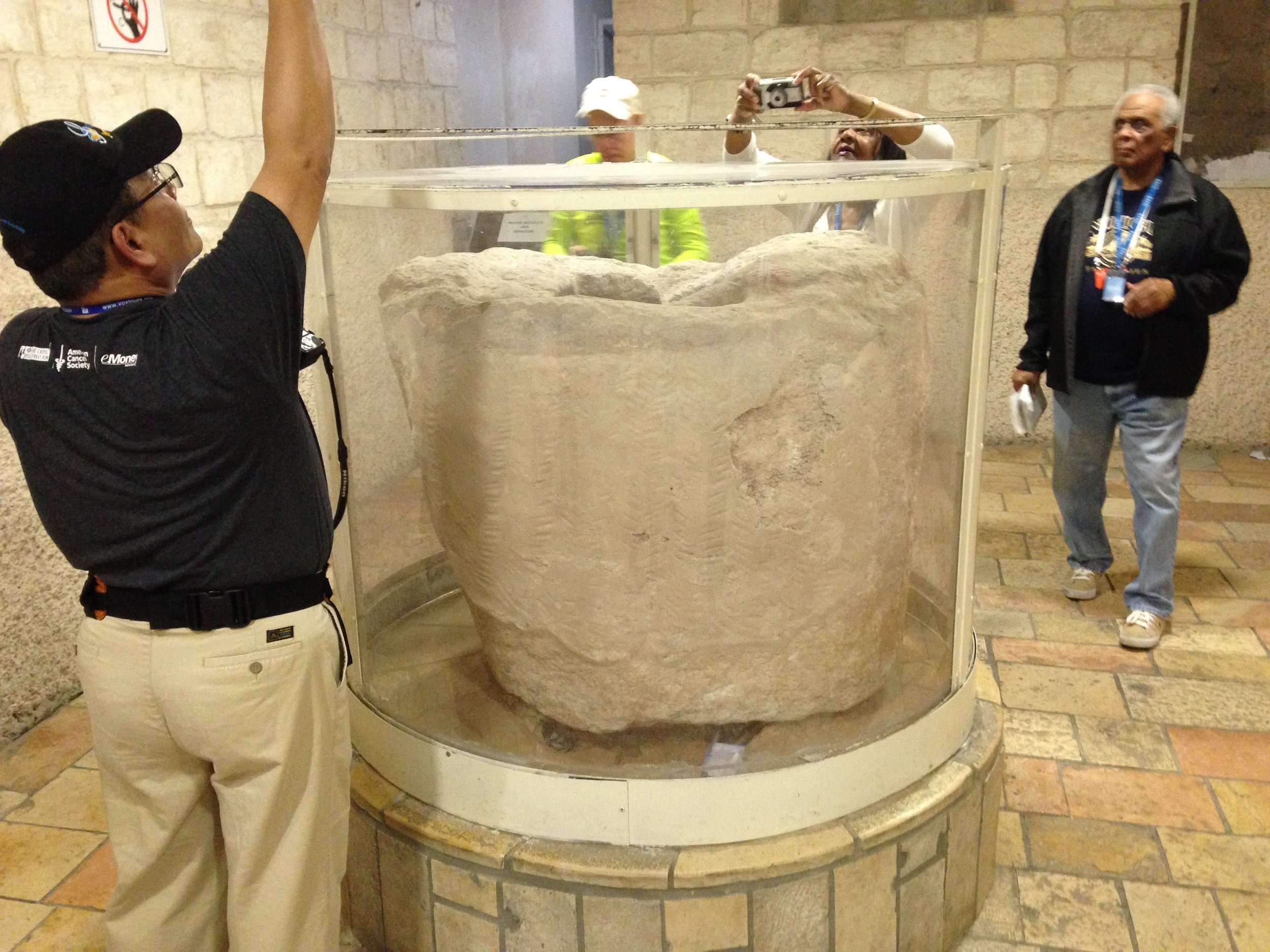Jesus and Joy: Why It Matters to You
January 20, 2019
This unusual passage from the second chapter of John offers a fascinating introduction to the message of Jesus. Dr. Jordan shares important background of this first miracle of water turned to wine; we also hear why Jesus’ first miracle would have been told in this way, and what it means for us today.
GOING DEEPER
Parables in The Synoptic Gospels and The Gospel of John: Also known as the Synoptic Gospels, Matthew, Mark and Luke are commonly grouped together under a fancy word from Greek called synoptic or “seen together.” The concept comes from comparing all four gospels and realizing that the first three have similar structure, chronology and perspective on Jesus. They also all three portray Jesus teaching with the common Jewish technique of story-telling, or offering parables. Luke has the most parables. Of the synoptics, Mark has the fewest. But John is unique. There are no parables in John. That’s because in John, Jesus is the parable. The story throughout John revolves around what Jesus does. These are called “signs” in John. And this passage, when Jesus turns the water into wine, is his first sign. There will be a total of seven.
Purification: Jesus’ instructions in this passage of John 2 are key. Jesus transforms vessels for ritual purification into containers of wine. Why?
Water is vital for life. We drink it and it keeps us alive. We bathe in it and we remove the debris of the day. Ritualistically, we understand baptism much like our Jewish brothers and sisters understood this rite of purification: one begins anew through the rite of purification. But Jesus changes these stone vessels of ritual into containers of something sacred.
Sanctification: The word sanctification is a fancier word that means holy or sacred. So from the story, it appears that ritual purification is not what is needed. The stone containers are themselves transformed, a parable in a sense of what by be hinted at here: wine is highly symbolic.
Liberation: Whether at a wedding or as a part of Passover Seder celebrations, wine represents something extremely significant. In both events and in much of Jewish life, wine offered a glad reminder of partnership with God. God gives the sun and the rain and the seed, and the people provide the cultivation, the hard work and the accrued skill from past generations. Further, sharing in the drinking of wine provided a mysterious kind of lift, a change of mind, and renewal of the spirit, and shared experience of communal joy.
Joy: Later in John, Jesus says “I have come so the you might have life, and have it more abundantly” (10:10). And further on Jesus says: “I have said these things that my joy might be in you, and your joys might be made complete” (15:11). Both in the abundance of 10:10 and the joy of 15:11, we can feel the emotional movement. Jesus’ concern with his disciples and with us carries the consequence of deep spiritual connection.
So this first miracle gives a grand entrance into the spiritual journey with Jesus. There will be many dips and turns and twists. But It begins and ends with joy. Liberated from fears and pedantry, freed from our anxieties and the drama of never feeling like we are quite enough, this change of water to wine offers a new take on life, a new beginning, a transforming pilgrimage of faith.
Going Deeper Still …
The Land of Galilee: Grapes, vineyards, wine and wine production would have been a common sight for the majority of Jesus’ family and community. Many of them would have been employed in some aspect of wine production for the wealthier landowners. But while surrounded by the sights and sounds of vineyards in Galilee, the vast majority of the people living there rarely would have enjoyed the fruits of their labor. They were mostly regular folks with a decent supply of fruits and vegetables so abundant from the rich Galilean soil. But what they had was just what they needed. Grains, bread, figs, dates, pomegranates, olives and olive oil, some fish … Their diet was healthy but sparse.
The Weddings of Galilee: Then came wedding times. These were true celebrations when the hosts were expected to offer everything, including wine, in abundance. So what these regular people normally experienced changes dramatically. The hosts are to offer a grand party on a grand scale for seven days, ordinarily from Wednesday until Wednesday. That was so everyone in any way connected to the village or the family got to participate. Some would have to be late and couldn’t get there until maybe Monday or Tuesday. So the family (usually the groom) was expected to be prepared for any eventuality and have plenty of supplies, especially something as special as wine. All would be guaranteed to feel fully part of the celebration – at least that was the idea.
But right away in the this text, we discover a problem (read John 2:1-12)
Mary Gets Involved: We also find out that our scripture tells us right away that it is Mary (described as “the mother of Jesus was there”) who is front and center. If this were a movie, the camera would be fully on Mary right as the scene begins. And we discover that Mary is worried. She, somehow, is connected to the drama. Perhaps worried that the lack of wine will cause shame to the hosts, disappointment to the guests, a faux pas to the community … we don’t know all the details of why she feels compelled to do what she does. But we do clearly see her intent: get Jesus involved.
“They have no wine.” At first uninterested in getting involved, Jesus responds with “Woman, my hour has not yet come.” Not an overly warm response to his mother. And yet, undeterred, she ignores his response and offers one of her own. To the steward she says: “Do what he tells you.” this moment in the Gospel of John becomes the opportunity for Jesus’ first miracle, or sign.
Six Stone Jars: As a part of this “Going Deeper,” you should see a photo of mine from the Wedding Chapel of Cana, the traditional site where our story took place. I took this picture intentionally with some members of my group present so that you can see the immense size of these containers. As you can see, the word “jar” is misleading. These were enormous carved stone containers used for a ritual of purification. After a long day and a dusty walk, and after interacting with all sorts of different kinds of people and problems, the idea was logical. Before evening prayers, before any kind of worship, one needed to purify oneself. Use the water from these stone containers and wash your hands, arms, neck, face, shoulders, feet and ankles. You don’t need a lot of imagination to feel the comfort cool, fresh water cleansing your skin and your spirit from whatever you had experienced that day. Since this was wedding, the containers were apparently empty. There are six, each holding between twenty and thirty gallons of water.
Now, in response to Mary’s concern, Jesus gives instructions: “Fill all six to the brim.” Then he tells them to taste it. Water to wine. Purification. Sanctification. Liberation. Joy.
Mary has the wisdom to shift the camera from her to him. And Jesus changes everything.


